Off-airfield transport system - new equipment for the Russian Army
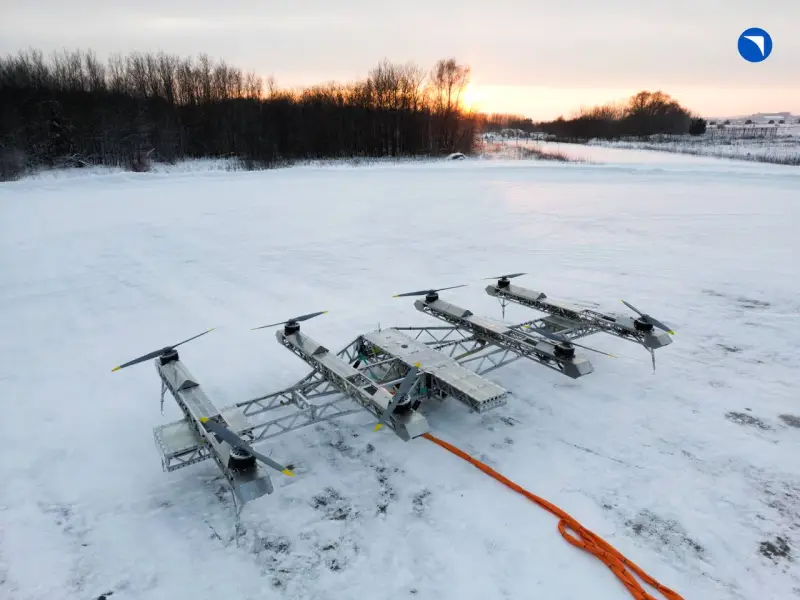
Off-airfield unmanned transport system. Photo: United Aircraft Corporation
Giants in the sky
They started thinking seriously about unmanned systems only after the start of the special operation. At the system level, of course. They have long learned to build in garages and basements drones for the front, but this is far from industrial scale. As before standardization with unification, which military equipment cannot do without.
The state only realized that unmanned systems would have to be a priority in the very near future only in the middle of last year. In June 2023, the Unmanned Development Strategy was adopted aviation until 2035 with the summing up of interim results in 2030. On paper, everything revolves around the civilian industry, but everyone is well aware that without a dual purpose, not a single domestic drone should be developed. It should be. At least until the moment of Russia's victory in the special operation.
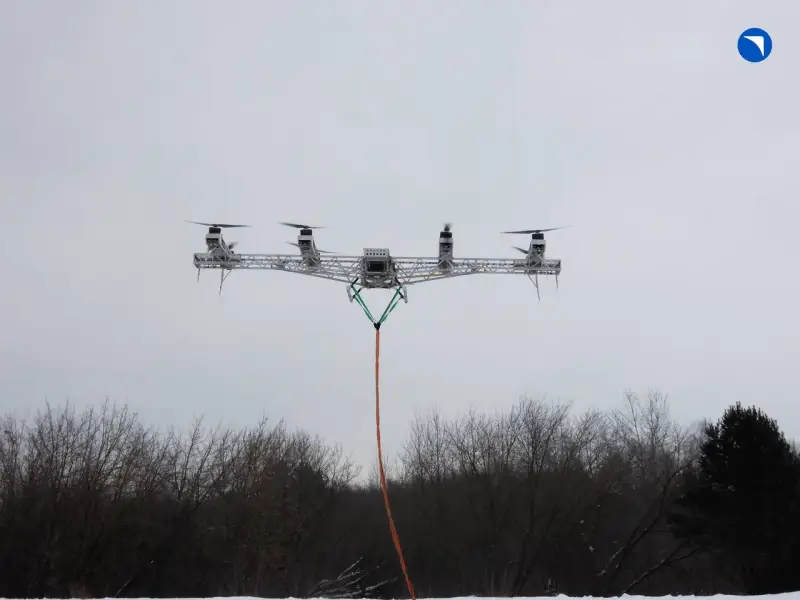
Off-airfield unmanned transport system. Photo: United Aircraft Corporation
If a strategy is adopted, then a lot of money will be allocated for its provisions. And it is right. Until stable demand has been formed in the country, and business is not ready to invest for a long time, the state will have to finance development. In the near future, we should see a scattering of new products in the field of domestic drone construction. Nobody has canceled natural selection in the market, and the fittest must survive in the struggle. There is no other way - without competition, neither the army nor the civilian sector will get good drones.
Particular attention should be paid to the heavy drone sector, as the most promising and little-studied in our country. There are many developments in Russia, but most of them are far from serial implementation. Mainly due to dependence on imported components, as well as undeveloped infrastructure. It is possible to create hundreds of unmanned transport helicopters, but without trained personnel and understanding of the specific application, the equipment will remain dead weight.
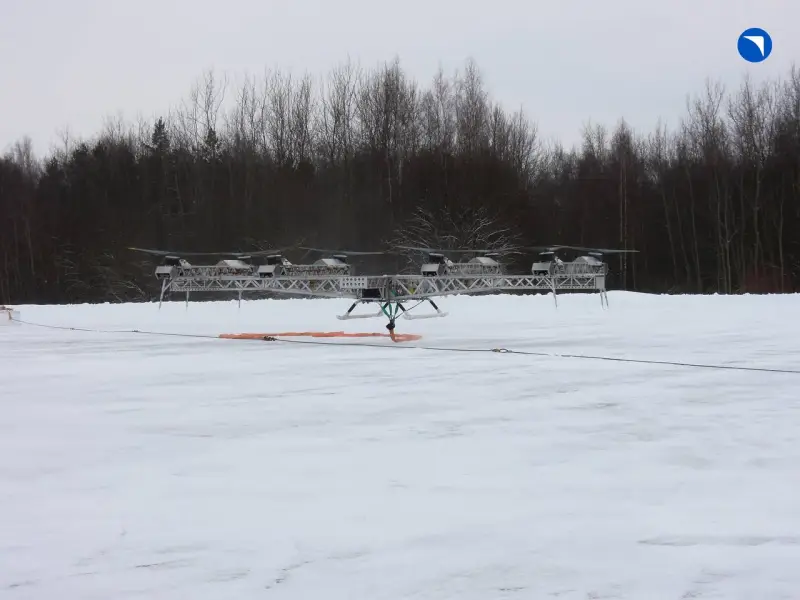
Off-airfield unmanned transport system. Photo: United Aircraft Corporation
Important work is being done at the Sukhoi Design Bureau on the topic of unmanned trucks. On February 21, engineers lifted into the air a device with the complex name “Unmanned transport system off-airfield based” or BTS-VAB. This is just a prototype for now, but its design inspires some hope.
According to the authors, the drone is equipped with a hybrid power plant consisting of an internal combustion engine, a generator and electric motors with rotors. For takeoff, electric propulsion from on-board batteries is used primarily. The remaining operating modes are provided by a gasoline engine.
Judging by the photographs published by the United Aircraft Corporation, drone there is still a long way to go to be a full-fledged technology demonstrator. But something can already be told even on the basis of a photo report. The car turned out to be quite big - more than six meters long, about 2,5 meters wide. By design, the BTS-VAB is an octocopter, with four beams with pairs of electric motors located on the wing plane.
Obviously, hovering and vertical flight are not key to the drone's performance. This is a transport device for transporting cargo over long distances, and in flight it will rely primarily on the wing. Evgeny Rubtsov, the project manager, announced a 500-kilometer flight radius and a payload of 300 kilograms.
On the prototype, the wing planes have not yet been formed - in fact, we see a device assembled from aluminum molds. There are serious doubts about the presence of an engine on a drone. The photographs do not show the location of the engine, nor the fuel tanks. There aren't even compartments in which they can fit.
Most likely, the Sukhoi Design Bureau presented a very crude prototype, demonstrating only the possibility of takeoff and simple maneuvering in hover mode. The photographs and videos do not show not only the internal combustion engine with fuel tanks, but also the appropriate batteries for the traction electric motors.
Therefore, there are few outputs - power is supplied either through a holding cord or through completely symbolic batteries placed in the central beam of the prototype.
But all this does not negate the importance of the first flight of such a machine. Even if not in a completely complete form.
Heavy ones - into the air!
The scope of work for the use of heavy drones has yet to be invented.
Noteworthy story with modern passenger airliners, which have been capable of flying by remote control for ten to fifteen years. And more recently, also under the guidance of artificial intelligence. Flying is likely to become even safer. But who would buy a ticket for a plane with no pilots and only flight attendants?
The situation with heavy drones is similar - there is still no clearly constructed logic for the operation of such machines. We will not go into the details of civilian operation, but will deal with work for the needs of the military.
If BTS-VAB is finally brought to fruition, two problems will arise. The first is what to transport on such a device. The second is how to protect the drone from easy and spontaneous destruction from the ground.
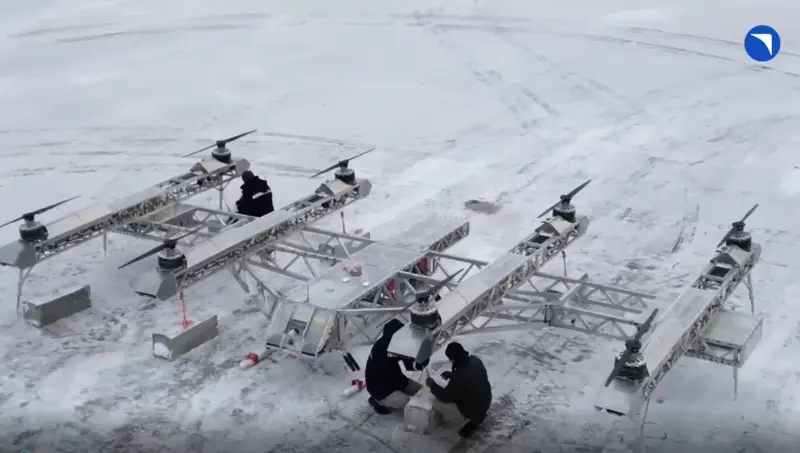
A video fragment that allows you to estimate the size of the BTS-VAB
The vehicle is clearly not cheap, and the enemy will not spare missiles to neutralize the threat. Moreover, when a low-speed vehicle operates with an internal combustion engine with an appropriate thermal signature. Therefore, the device will inevitably have to fly at low level, which will sharply limit its operating range. Or you will have to raise a repeater drone, which complicates the entire organization.
There are also difficulties with the payload.
Calculations show that the vehicle is capable of carrying a couple of wounded soldiers on board for evacuation. But there is simply nowhere to place them. On the plane of the wing it is impossible - there are rotors all around. And carrying wounded soldiers on a low-level flight on an external sling is not a good idea. For this, the drone operator must have incredible piloting skills. There are doubts that the evacuee, being conscious, will agree to fly of his own free will.
According to the developers, the main flight mode will be automatic along a pre-built route. This will allow you not to be afraid of enemy electronic warfare until a certain moment, but will significantly increase the chances of death from fire from the ground. As well as from a banal collision with a power line. In the event of an “emergency”, the operator will be able to take control of the machine. Similar situations at the front will occur all the time, so BTS-VAB still cannot do without a pilot on the ground.
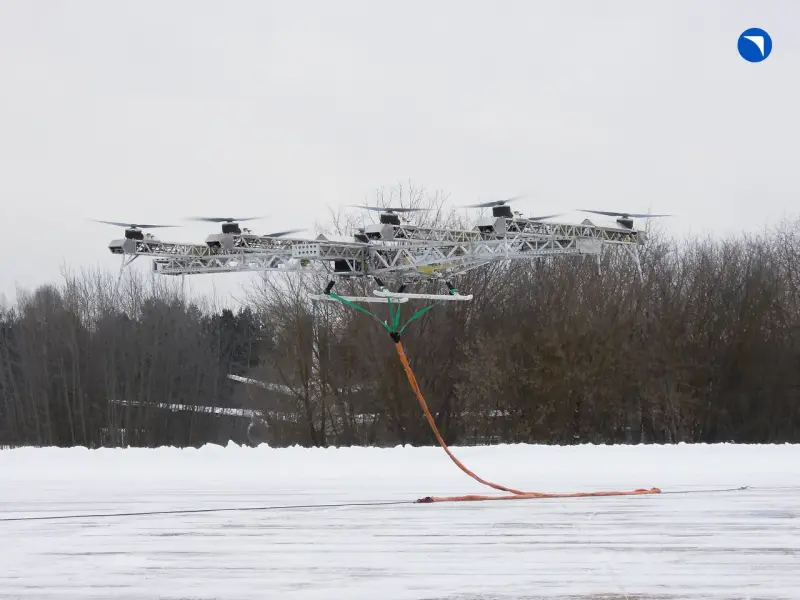
Off-airfield unmanned transport system. Photo: United Aircraft Corporation
At the end of the material, we will try to ask a few questions to the developers of the flying platform.
The first is why the official website declares exclusively civilian use of the drone? In particular, it says:
What are they afraid of? Where are the opportunities for front-line operation?
Now, whatever one may say, the civilian sector is not critically dependent on heavy drones. It turns out to be a very interesting situation. If the developer does not sharpen his equipment for dual purposes from the very beginning, then he is free to choose design solutions accordingly. For example, buying engines from the Chinese or even making do with parallel imports. In this case, the army will not be able to order drones that are important for the front.
And then the second question - where do the engineers intend to get the internal combustion engine for their device?
In Russia, they have long forgotten how to make such small-sized motors, and developing a unit only for the needs of BTS-VAB is unreasonably expensive.
We can only hope that somewhere in the depths of engine-building design bureaus they are right now working on a miniature gasoline engine for a heavy drone and a whole range of other equipment, which we will learn about very soon.
Information